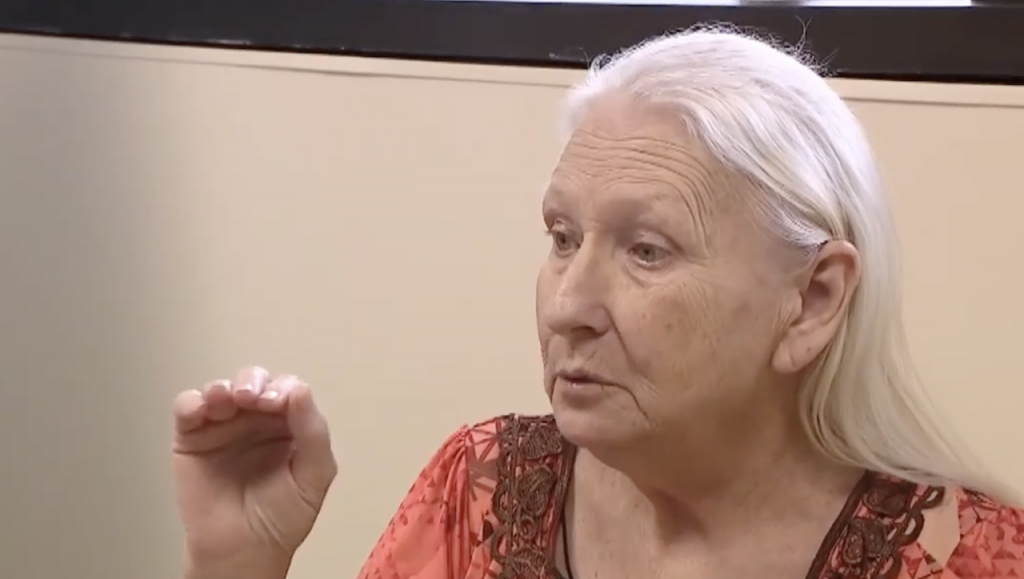Understanding Lung Cancer
- A 66-ear-old woman from Florida had a frightening encounter with a bull last year. When she was being treated for her injuries, doctors discovered a tumor in her lung.
- Lung cancer doesn’t cause symptoms until it has already spread outside the lungs, making it harder to catch in its early stages, that’s why Mull’s bull incident likely saved her life. The disease predominantly impacts people with a history of smoking, although this cancer can also impact non-smokers.
- Lung cancer screening is painless and lasts only a few minutes. It involves using a low-dose computed tomography (LDCT). While lying on a table, an X-ray will scan your lungs for anything unusual, such as a shadow over the lungs.
- Treatment options for lung cancer depend on its type, its location, and its staging. In general, treatment methods include surgery, chemotherapy, radiation therapy, targeted therapy, or a combination of any of these treatments.
The shocking cancer diagnosis was revealed when Mull was being treated for her injuries after she intervened a 2,000-pound bovine disturbing her son on their farm near Ocala.

She explained, “I regret that but I [also] don’t regret it,” noting that when she was knocked down, she “kind of gave up the ghost.”
“I was like, ‘OK, Lord. You know, I’m done here. I can’t hold out any longer,'” she recalled.
Thankfully, her brother-in-law came to the rescue with a tractor to move the bull elsewhere.
Following the incident, Mull was left in the hospital with bruises all over her body, including her face, and a broken rib. But scans taken on the night of the incident, November 10, revealed something more—she had a tumor.

The scan revealed she had stage one lung cancer which could have caused her to become very ill and kill her within one year, but Mull was able to have the tumor removed just two weeks ago.
Mull, who is now using her story to raise awareness on the dangers of smoking, said, “I did love a good cigar. And I … My bad! Look at this little sucker that they found at the same time. That right there is the tumor.”
After having her tumor removed by Dr. Jonathan Daniel at Tampa General Hospital, Mull admitted to WSVN, “I’m alive and I’m gonna stay alive. And, I just feel like I got another chance.”
As for some words of wisdom Mull would like to share to others who enjoy smoking, something she has given up since the bull incident, she warned, “One more, one more. It’s not going to hurt me. God will tell you when it’s enough.”
Helping Patients Understand Lung Cancer Risks
- Do You Need Some Motivation To Quit Smoking? Smokers Who Quit By 45 Reduce Their Excess Lung Cancer Risk by 87%, Research Shows
- For Early Non-Small Cell Lung Cancer, Immunotherapy Keytruda Before and After Surgery May Significantly Reduce Risk of Disease Progression, Promising Study Shows
- Lung, Colon Cancer Survivors Among Those at Elevated Risk for Heart Disease, New Study Says
- Only 5.7% of Americans At High Risk for Lung Cancer Are Screened Annually; Here’s What You Need to Know About This Potentially Lifesaving Procedure
Smoking and Lung Cancer Risk
Lung cancer is the leading cause of cancer deaths for men and women in the United States. Nonsmokers still get lung cancer, but cigarette smoking is the number one risk factor for the disease. Tobacco smoke contains a mixture of more than 7,000 different chemicals, at least 70 of which are known to cause cancer, the CDC explains.
The CDC says cigarette smoking is linked to about 80 to 90 percent of lung cancer deaths, and people who smoke cigarettes are 15 to 30 times more likely to get lung cancer or die from lung cancer than people who don’t smoke. Additionally, second-hand smoke can cause lung cancer.
Smoking is, of course, the primary cause of lung cancer, but nonsmokers can and do develop this disease. Researchers have made progress in understanding the differences between lung cancer in smokers versus nonsmokers, says Dr. Ronald Natale, a medical oncologist at Cedars-Sinai Medical Center, and they’re developing targeted treatments that will be able to address the genetic drivers of lung cancer in nonsmokers.
“Among patients who are nonsmokers, or former very light smokers, we identify a mutation that we can target with pills in about 60% to 70% of them. That leaves 30% or so, 40%, in whom we either have a target for which we do not have successful treatment,” Dr. Ronald Natale, a medical oncologist at Cedars-Sinai Medical Center, previously told SurvivorNet.
“Among patients who are smokers, who have more complex cancers that have hundreds, sometimes thousands of mutations, don’t have a driver mutation that we can give a pill for, which is only a tiny percentage of lifelong smokers. Chemotherapy is the primary treatment in most patients,” Dr. Natale explained further.
Medical oncologist Dr. Ronald Natale explains how smokers vs. non-smokers differ when it comes to lung cancer and its treatment
There are a few things you can do that might lower your chances of getting this cancer, such as:
- Quitting smoking. The sooner you quit, the lower your odds of developing lung cancer become.
- Avoiding radon exposure. The leading cause of lung cancer in nonsmokers is exposure to radon gas. This natural, radioactive gas can build up in any building, including homes. Because you can’t see or smell radon, the only way to know whether it’s accumulating in your home is to test for it.
- Not breathing in secondhand smoke. Not only should you avoid smoking yourself, but you should stay away from other people who smoke. Just being exposed to smoke from someone else’s cigarettes can increase your risk.
- Avoiding or limiting your exposure to cancer-causing chemicals. Benzene, arsenic, chromium, and asbestos have all been linked to lung cancer.
- Eating a colorful diet with lots of fruits and vegetables. Try to eat two to three cups of vibrant vegetables and fruits each day.
Some lung cancer risks are harder to avoid. For example, you may be at a higher risk of developing this cancer if you are constantly exposed to air pollution, or if you have a family history of lung cancer. If you have any of these risk factors, it’s important to discuss them with your doctor, so you can stay on top of screening tests.
Does marijuana smoking cause lung cancer? SurvivorNet’s experts discuss the latest research on the connection.
Understanding Lung Cancer
Lung cancer forms when cancer cells develop in the tissues of the lung. It is the second most common form of cancer and the leading cause of cancer deaths in both men and women in the U.S., SurvivorNet experts say. The reason being, it’s “completely asymptomatic,” says thoracic surgeon-in-chief at Temple University Health System Dr. Joseph Friedberg.
“It causes no issues until it has spread somewhere. So, if it spreads to the bones, it may cause pain. If it spreads to the brain, it may cause something not subtle, like a seizure,” Dr. Friedberg adds.
WATCH: Detecting lung cancer in the absence of symptoms.
Scans such as X-rays can help doctors determine if a shadow appears, which can prompt further testing for lung cancer.
Lung cancer often doesn’t cause symptoms until it has already spread outside the lungs, according to SurvivorNet’s experts.
There are two main types of lung cancer, which doctors group together based on how they act and how they’re treated:
- Non-small cell lung cancer (NSCLC) is the most common type and makes up about 85% of cases.
- Small cell lung cancer (SCLC) is less common, but it tends to grow faster than NSCLC and is treated very differently.
As for the type of lung cancer Mull had, it was stage one. SurvivorNet experts describe stage one lung cancer as when, “The tumor is less than or equal to 4cm in size and is limited to a single spot of the lung.
“In Stage I lung cancer there are no lymph nodes involved and the cancer has not spread outside of the lung. Stage I is further divided into Stage IA1, Stage 1A2, Stage 1A3, and Stage 1B depending on the size of the tumor.”
If you quit smoking, you can significantly reduce your risk of developing the disease and dying from it.
Treatment options for lung cancer depend on its type, its location, and its staging. In general, treatment methods include surgery, chemotherapy, radiation therapy, targeted therapy, or a combination of any of these treatments.
Know When To Screen For Lung Cancer
The reason lung cancer can be so deadly is that it’s often caught at a late stage, when it’s more difficult to treat. When doctors can catch this cancer at an early stage, survival vastly improves. The U.S. Preventive Services Task Force recommends lung cancer screening with the same level of importance as mammograms for breast cancer.
Many lung cancers are found incidentally on tests done for other reasons. Right now, screening is recommended for people who meet all of the following criteria:
- You are or were a heavy smoker (who smoked a minimum of 20 pack years)
- You currently smoke or quit within the last 15 years
- You are between 50 and 80 years old
Talk to your doctor about getting a low-dose CT scan (LDCT) if you are at high risk because you were or are a heavy smoker and you’re between the ages of 50 and 80. Unlike diagnostic CT scans, LDCT scans use a smaller amount of radiation. Also get evaluated if you have symptoms like a cough that doesn’t go away or chest pain.
Thoracic oncologist Dr. Leena Gandhi talks you through what to expect during a lung cancer diagnosis
Questions for Your Doctor
If you find yourself diagnosed with lung cancer and are concerned about the long-term impacts, here are some questions you can ask your doctor.
- Has my cancer spread to other parts of the body?
- Based on my cancer stage, what are my treatment options?
- What are the side effects of my recommended treatment?
- Are there ways to help minimize the effects of treatment?
- How long will I be unable to work or carry out my daily activities?
- What financial resources are available to get the treatments I need?
Contributing: SurvivorNet
Learn more about SurvivorNet's rigorous medical review process.

